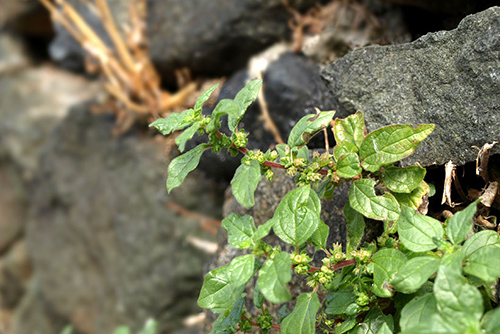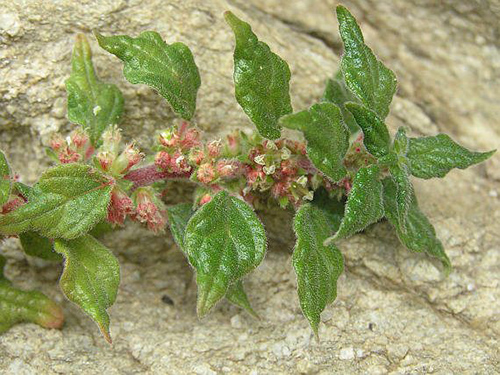Contents
According to classical botanical literature, the pellitory of the wall plant was given the Greek name helxine and the Latin name muralis herba (grass of the wall). It grows on not only walls but also near streams.

Pellitory of the Wall Scientific Facts
- FRENCH: Parietaire.
- SPANISH: Parietaria, hierba del muro.
- ENVIRONMENT: It grows between rocks and on walls all over Europe and in dry regions of South America.
- DESCRIPTION: Vivacious plant of the Urticaceae family, growing up to 30 cm high. Its leaves are covered by non-urticant hair.
- PARTS OF THE PLANT USED MEDICINALLY: The stem and the leaves.
Healing Properties

The active components of the pellitory of the wall are potassium nitrate and flavonoids, which give this plant diuretic properties, and mucilages, to which it owes its anti-inflammatory and emollient properties.
- When internally used, the main application of pellitory of the wall is for urinary tract afflictions: renal colic (it helps eliminate calculi), cystitis, and oliguria (lack of urine). It has stimulating effects since, besides increasing urine production, it relaxes, sedates, and reduces the inflammation of urinary organs.
- It is used externally with good results to heal wounds, burns, stretch on the lips, the skin, the nipples, and anal fissures.

How to use Pellitory of the Wall
- Infusion with 40-60 grams of the dry plant (better if fresh) per liter of water. Drink four or five cups daily.
- Fresh juice. Drink half a glass 3 times a day. It can be flavored with lemon juice or lemon rind.
- A poultice applied fresh with the plant and mashed on the affected area.
DISCLAIMER: All content on this website is presented solely for educational and informational objectives. Do not rely on the information provided as a replacement for advice, diagnosis, or treatment from a qualified medical expert. If you are pregnant, nursing, or have any preexisting medical concerns, talk to your doctor before using any herbal or natural medicines.
REFERENCES
- George D. Pamplona-Roger, M.D. “Encyclopedia of Medicinal Plants.” George D. Pamplona-Roger, M.D. Encyclopedia of Medicinal Plants. Ed. Francesc X. Gelabert. vols. 2 San Fernando de Henares: Editorial Safeliz, 2000. 582. Print.
- Google Scholar: https://scholar.google.com/
- ScienceDirect: https://www.sciencedirect.com/
